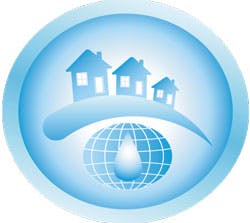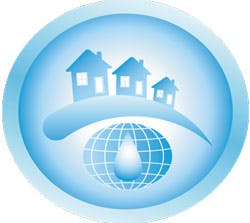By Bill Decker
As a nation, we need to better care for the water we use and ultimately reuse. We also need to better care for the assets that treat, pump and distribute water, as well as for the systems that collect it. This starts with education, and it's essential that we continue to raise awareness of our water use and reuse, and of the life of our water assets. As such, I am advocating that we raise a "sustainable water generation."
Lake Mead in the state of Nevada, for example, is at its lowest level since construction of the Hoover Dam, and yet Las Vegas continues to use almost twice the amount of water per capita as the rest of the United States. As a nation, the U.S. uses the most water per capita, but our direct water use does not tell the whole story. We also need to look at the amount of virtual water required to support our lifestyles.
I also did not realize that producing one gallon of ethanol requires nearly 10,000 gallons of water. A vehicle using petroleum gasoline requires approximately 0.1 to 0.3 gallons of virtual water per driven mile. Corn ethanol also requires 0.6 to 21.0 gallons per the same driven mile -- an increase of 100 to 21,000 percent.
Our choices for food, clothing, landscaping, and recreation all affect our water footprint, and in many cases, our choices are not sustainable. Some utilities are already paying people to remove grass and other water-intensive landscaping and replace it with more water-sustainable solutions. Local public schools in Winnebago County, Ill., for example, have distributed some low-flow, point-of-use devices across the community in an effort to increase awareness of direct water use, and they have introduced the concept of virtual water to students and their families.
In addition to education, increased investment in our water assets is required. Each community needs to budget for repair and replacement of underground utilities, if for no other reason than to stop the loss of potable water. Across the country, water treatment plants lose as much as 20 percent of the potable water they produce before it makes it to the end user.
Imagine the public outcry if gasoline pumps lost 20 percent of our purchased gasoline before it made it to our cars or if 20 percent of our groceries disappeared before we left the grocery store. There is no difference when it comes to producing potable water and losing it to antiquated distribution systems.
Some utilities are faced with infrastructure that has an average age of 70 years and a replacement rate of 1 percent per year or less. We are on the wrong end of the lifecycle curve with many of our assets and need to change this. As a profession, we need to educate our community of customers, friends, coworkers, and families on the entire cost of water and the importance of building sustainability into our water use and water pricing.
Man-made or not, climate change affects us all. Water stress is already present in the U.S. due to diminishing water supplies, and it is increasing. Around the world, 70 percent of our freshwater is used for agriculture, and it appears to be growing as more countries increase the amount of meat in their diets and as we continue to export more food products. Peter Brabeck, chairman of Nestlé, said, "Humankind is running out of water at an alarming pace. We're going to run out of water long before we run out of oil."
On a positive note, our profession keeps raising the bar on water treatment. Today's standards are far advanced compared to a generation ago, and our discharged water is often better than some source water. We are removing more and more pollutants from our water supply and from our discharge, but we need to carry this out in a sustainable way.
Water sustainability requires us to make changes. We need to develop foods that require less water as well as more sustainable solutions for energy production, manufacturing and water treatment. Further, we need researchers, manufacturers and an industry to develop these solutions, and we need to provide education within our circle of influence. Ultimately, we need to raise a sustainable water generation.
About the Author: Bill Decker is vice president and general manager, Equipment and Services Group, for Aqua-Aerobic Systems Inc. in Loves Park, Ill. He is a member of the Water and Wastewater Equipment Manufacturers Association's Board of Directors and is vice chair of its Marketing and Member Services Committee.




